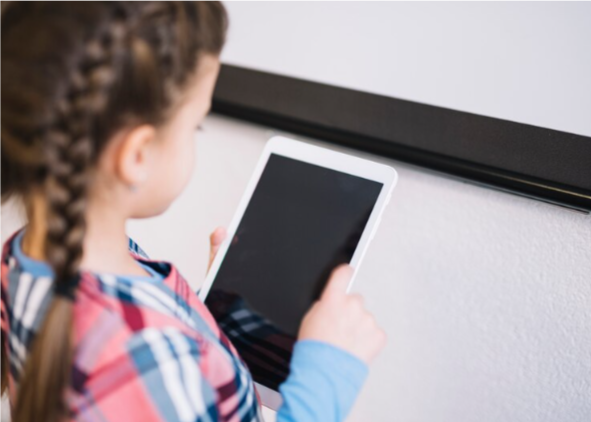iPads were once luxury goods, but they are now commonplace household appliances in the digital era. Their adaptability is extremely useful for communication, education, and amusement. They are now a way for families to get their kids involved in interactive play and learning. iPads have advantages, but they also have drawbacks, especially for younger users. Due to their innate curiosity and lack of maturity, children may unintentionally expose themselves to improper content, make transactions they don’t plan to make, or come across a variety of online hazards. Consequently, childproofing iPads is essential rather than just a choice.
A number of procedures are involved in childproofing iPads to ensure that they are a secure and supervised space for your kid. This entails putting in place strong parental controls, monitoring and efficiently managing screen time, and limiting device use to a single app by utilizing features like Guided Access.
Crucial elements also include knowing and managing the content your child has access to, imposing limitations on purchases and downloads, and teaching them about internet safety. This is not just a list of measures to take; it is meant to be a comprehensive guide that will make your road to a kid-friendly childproofing iPads easy and stress-free. In the end, your gadget will serve as a safe, instructive, and enjoyable instrument for your child’s digital development.
Recognizing the Hazards
Being in contact with unsuitable content Unfortunately, the internet, which is a huge source of media and information, also contains stuff that is inappropriate for young children, including explicit language, adult themes, and violent content. Unrestricted access raises the possibility that kids will unintentionally come into contact with this hazardous content. It could only take them a click to come across content that could upend, mislead, or introduce them to ideas that are much beyond their level of comprehension. In order to protect kids from the less desirable aspects of the internet, it is imperative to set up parental controls and internet limits. This will guarantee that kids’ digital experiences are age-appropriate, safe, and educational.

Erroneous In-App Purchases:
A lot of contemporary apps—games in particular—are beautifully crafted with components that persuade users to buy in-app. These could be anything from additional lives to cosmetics to content that can be unlocked.
Children may find it difficult to understand that virtual purchases are equivalent to real money, thus they may be especially tempted to make purchases. They might not be aware of the financial ramifications and see clicking “buy” as just another aspect of the experience.
This naivete can result in parents receiving unexpected and frequently large invoices for virtual goods their child unintentionally purchased. It’s critical for parents to monitor their children’s app usage, teach their kids the value of money, and implement parental controls that demand passwords for purchases in order to prevent such scenarios. The secret to preventing the shock of unforeseen costs and encouraging good digital activity is to be proactive with these methods.
Screen Time and Addiction: Too much screen time can cause behavioral problems, sleep disturbances, and addiction. Limiting the amount of time kids spend using devices is crucial.
Data security and privacy: Children are more susceptible to privacy violations. They might unintentionally divulge private information or fall victim to cybercriminals.
Putting in Place Simple Restrictions
To set up parental controls, navigate to the childproofing iPads settings menu and select the ‘Screen Time’ function. Make a passcode that is unique from the unlock code on the smartphone. To restrict access based on age ratings, prohibit changes to privacy settings, and limit access to explicit content, navigate to the content restrictions tab.
Making Use of Guided Access
With Guided Access, you can choose which functions are available and the childproofing iPads remains focused on a single app. Navigate to Settings > Accessibility > Guided Access to configure it. To activate Guided Access mode in any app, triple-click the home or side button after it has been configured.
Controlling Privacy and Content
Use the ‘Web Content’ option to restrict adult websites or designate only websites that have been approved, and adjust the content ratings to correspond with your child’s age. Review privacy settings frequently to make sure that personal information is secure.
Regulating Downloads and Purchases
Go to Screen Time > Content & Privacy Restrictions to make every transaction subject to a password requirement. You can either completely disable in-app purchases or give your youngster access to Family Sharing and an Apple ID so they can monitor and approve downloads.
Observation and Scheduling
You may plan downtime, establish time limits for specific apps, and keep an eye on app activity by using the ‘Screen Time’ function. As your child grows and their requirements vary, periodically examine these settings and make necessary adjustments.
Choosing Content and Apps That Are Kid-Friendly
Seek for educational apps that encourage learning and creativity. Examine reviews and age ratings from other parents. Child-friendly content is review and suggest by organizations such as Common Sense Media.
Establishing a Secure Physical Space
Purchase a robust case to shield the iPad from spills and falls. Establish a special spot where your kids may use iPads and you can keep an eye on what they’re doing.
Interaction and Instruction
Talk to your youngster about the value of internet safety. Establish explicit guidelines for iPad use, including what kinds of content are prohibited and how long they are allowed to use the device each day.
Maintaining Current
Make sure you have the most recent parental controls and security features on your iPad by updating the software on a regular basis. Keep yourself updated about new apps, trends, and any dangers.
Personalized Access with App Restrictions
App Limits: Use Screen Time’s ‘App Limits’ function to establish daily time limits for particular applications or app categories. By doing this, you can avoid overuse and make sure your kids aren’t using social networking or entertainment applications too much.

Establishing a Harmonious Digital Lifestyle
Comparing Content That Is Educational and Entertainment Divide information on the iPad into categories that are informative and entertaining to promote a balanced use of the device. To encourage a healthy digital diet, devote more time to learning apps and impose rules on social media and games.
Promoting Innovative Application
Creative applications: Show your kids how to use applications like storytelling, computing, music, sketching, and drawing to foster both creativity and education. These help with skill development in addition to being entertaining.
Recognizing and Making Use of Family Sharing
Learn how to set up Family Sharing so that you may share books, applications, and other content with your family. With the help of this function, you can guarantee that your kids are only accessing appropriate content by approving their download and purchase requests.
Frequently Interacting with Your Child’s Electronic Devices
Parental Participation: Make using technology a shared endeavor. Play educational games, read aloud to your child, or explore new apps on the iPad together. This fortifies your relationship while also guaranteeing protection.
Establishing Information and Contacts for Emergencies
Contacts for emergencies and medical ID: Make sure your child’s iPad is configured with their medical information and emergency contacts. Instruct them on how to use these functions in an emergency.
Making Use of Resources and Platforms for Education
Online Learning Resources: Introduce your kids to educational games, interactive films, and courses offered by online learning platforms. Strong parental controls and content cater to different age groups and skill levels are features found on a large number of these platforms.
Talking About Digital Citizenship and Manners
Teach your kids the importance of being good digital citizens. Talk about the value of treating people with respect when interacting online, the enduring nature of one’s digital footprint, and how to prevent cyberbullying.
Strategies for Transitioning Into Adolescence: Talk to your youngster about the changes in digital responsibilities as they get older. Develop plans for handling social media, comprehending online privacy, and identifying the telltale symptoms of online predators.
Keeping Up with Technological Developments
Staying Current: Technology is changing quickly. Keep up with the most recent developments in educational apps, parental control software, and internet safety. Keep up with current events to make sure you are giving your child the best advice possible.
Conclusion
Childproofing iPads is a continuous process that changes as your child does. To guarantee a secure and enjoyable experience, check your settings frequently, communicate openly with your child, and keep up with current technological advancements.
Additional Resources
Visit websites like Common Sense Media, the Family Online Safety Institute, or Apple’s parent support page for additional information and help. They provide a plethora of tools designed to protect kids online.
We hope you found this information helpful in your journey to create a safer environment for your family. At GuardWell Safety, we understand that every home is unique, and so are your child-proofing needs. That’s why we offer a free Child-Proofing Consultation tailored to your specific requirements. Let our experts help you identify potential hazards and provide personalized solutions to make your home a secure haven for your little ones. Book your free consultation today and take the first step towards peace of mind.






